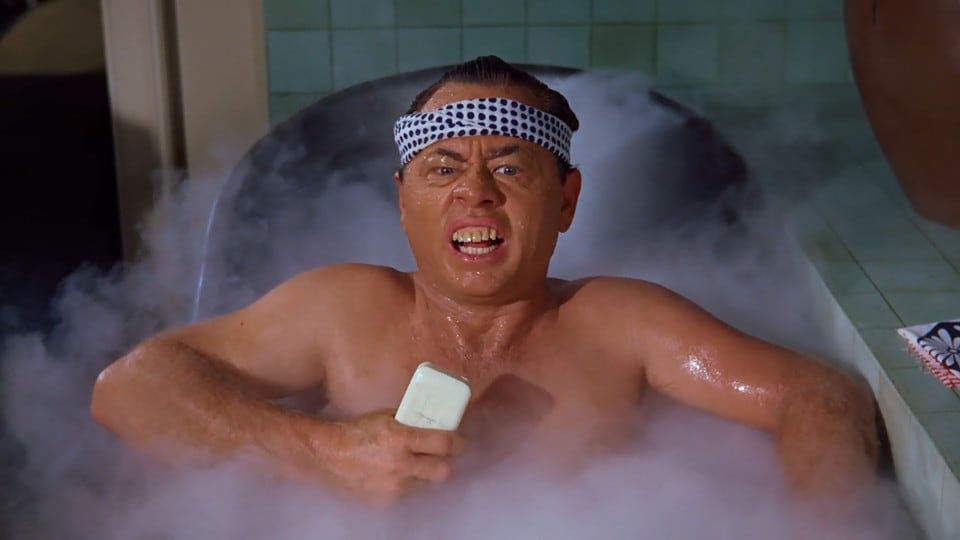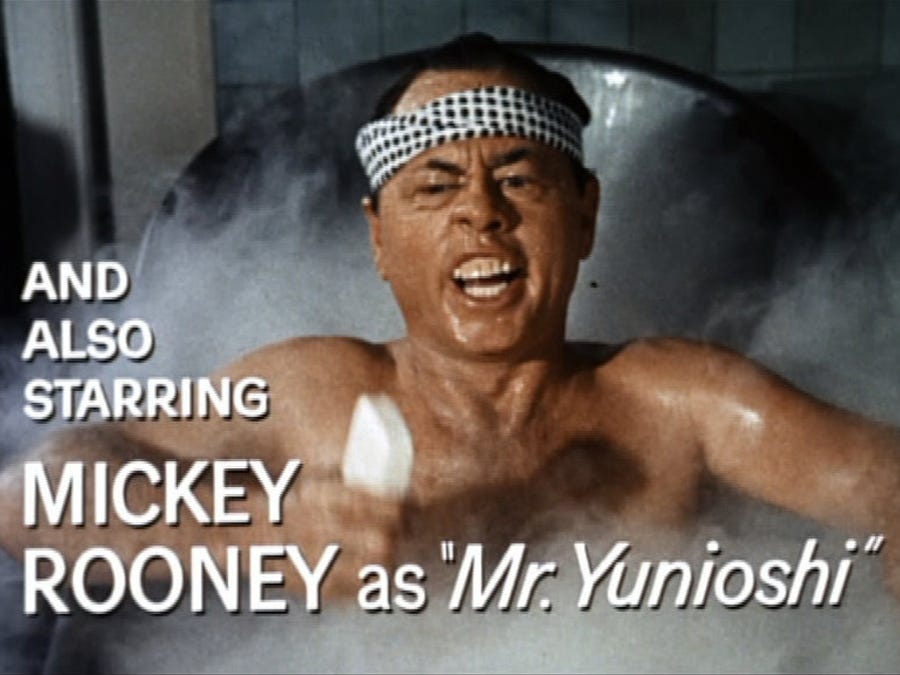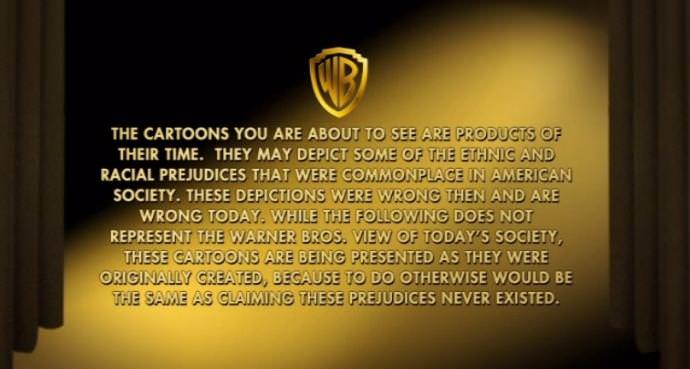All the times Hollywood was racist in their depictions of minority characters—have things changed?

In case you’ve been missing out on what’s been going on lately, the United States (and now most recently, London and New Zealand) have been going through their sixth day of protests and riots. The explosive spark to trigger the largest protest America has ever seen since the 1960s was the unfortunate death of 46-year old African-American George Floyd.
A video surfaced on social media on May 25 which showed a white police officer Derek Chauvin kneeling on Floyd’s neck on the ground for nearly nine minutes, despite Floyd repeatedly stating, “I can’t breathe”. Chauvin and the other three police officers on the scene were fired—however, it simply wasn’t enough for the African-American community that have suffered decades of police brutality.
As the United States rages on in their protests, as far as setting fires near the White House and sending President Donald Trump into the White House’s emergency bunker that has hardly been used since 9/11, crucial, much-needed conversations about racism have opened up.
One of the ways in which racial prejudice has reared its ugliest head and planted its destructive seeds is in the movie industry. It’s a known fact that Hollywood has a horrible track record when it comes to representing people of colour (if at all). Below, we explore some of the worst racist portrayals and how the movie industry is changing over the years to combat such problems.
THE IGNORANT
Song of the South (1946)
The Walt Disney Company loves to portray their founder, Walt Disney, as a lovely benevolent dream-maker who accepts any child from all walks of life to Disneyland—until you remember some of his tragically racist movies that are so problematic, they will forever be locked in the Disney vault. Such was the case of Song of the South (1946) which follows a young white boy named Johnny as he moves to the South and befriends Uncle Remus, who helps him deal with the separation of his parents by giving him valuable insights through African-American folktale.
The most startling thing about the film is how it portrays slave-owner relationships as endearing and peaceful. The plantation house is also depicted as an idyllic haven to live in, with African-American slaves looking a little *too* happy to be doing their master’s bidding. The film has been criticised for over-glorifying slave relations in the South that would no doubt have had a much different sentiment to what was depicted in the movie.
Dumbo (1941)
Another Disney classic that did not age well is Dumbo. The movie is honestly adorably with our favourite elephant’s big floppy ears… until the crows show up. In it, the group of crows all speak in a Southern twang and talk in jive—the main leader of the crows was also literally called Jim Crow, as in the deeply discriminatory law that enforced racial segregation between African-Americans and whites of the same name. He was voiced by a white actor (Cliff Edwards) which was essentially a minstrel show that was often performed in blackface.
Lady and the Tramp (1955)
This is also another fan-favourite that was so blatantly racist in its depiction of Asian people. The Siamese cats (literally called ‘Si’ and ‘Am’… really?) are designed with bucked teeth, slanted eyes and an over-exaggerated accent with broken English. Not only was it reductive of Asian culture, it also reinforced a lot of the stereotypes American audiences had at the time towards Asian people. Safe to say, the 2019 remake did not include the Siamese Cat Song for obvious reasons.
Breakfast at Tiffany’s (1961)

We’ve talked before about how utterly racist this classic film was, mainly for the way Mickey Rooney (a fully white actor) portrayed Mr. Yunioshi that left a sour taste in our mouths—from the grossly caricaturised depiction of East Asian accents to resorting to prosthetics for protruding buck teeth (why?) and taping his eyelids.
THE BAD
Sure, you might argue that these movies were the sign of the times and people were simply not educated enough hence these unruly depictions. Well, racism in the movie industry is still perpetuated to this day, even if it’s not done as egregiously as it was before because:
Whitewashing is still a thing…
Actors belonging to minority communities already do not get enough opportunities on the big screen as it is but what is something Hollywood loves doing every now and again? Replacing characters that are POC with white actors. Instead of getting actual actors that belong to that community, directors seem to prefer the idea of white actors cosplaying as them instead (again, why?).
Aloha (2015)
The movie that got even the likeable Emma Stone in the hot seat. As we all know, it’s somewhat of a rare commodity to have East Asians on the big screen—so you can imagine the disappointment when director Cameron Crowe decided to cast Emma Stone as Allison Ng who is a quarter Chinese and quarter Hawaiian. While there are certainly multiracial individuals who can white-pass (due to their outwardly Caucasian appearance), it would seem that Crowe took that too literally with Stone’s emerald green eyes and strawberry blonde look. He also apologised for it by explaining Ng was based off a real-life red head who was part Asian but “looked nothing like one”—according to who, though? Him? We will never know.
Argo (2012)
Many of us will remember the intense film that won Best Picture at the Oscars but did you know that Ben Affleck (who directed the movie, by the way) also decided to cast himself as the main lead, who in real life was a Hispanic man? Probably wasn’t the best call, Affleck.
Exodus: Gods and Kings (2014)
Pack on some bronzer and waste whole bottles of eyeliner and boom — you’re Egyptian. According to director Ridley Scott and the myriad of casting directors, that was seemingly enough to cast Christian Bale, Sigourney Weaver and Joel Edgerton as characters from the Old Testament for the biblical epic. They also use the same technique on white actors to play Persian, Arabian, Sheikh and other Eastern characters in movies, sigh.
Dragonball Evolution (2009)
Yeah, more like de-evolution because this is truly the biggest abomination of whitewashing to this day. The absolute mind-blogging aspect of the film is that it keeps all the East Asian-inspired aesthetics and Japanese names such as Goku, Grandpa Gohan and Mater Roshi… but replaces most of the cast with white actors. The well-loved superhero Goku is played by the fully Caucasian Justin Chadwick. And don’t even get us started on Ghost in the Shell and Avatar: The Last Airbender because we might not be able to take it.
THE GOOD
So, Asian and African-American erasure has been a rampant issue in Hollywood even in recent years. Such backward thinking will only further perpetuate the idea that minorities are not capable of portraying their own communities on screen and need a white counterpart to do so.
There certainly have been breakthrough feats though, in recent years which is always a positive thing to see.
Black Panther (2018)
Marvel’s revolutionary film that starred its first African-American led superhero and ensemble cast and crew was a treat for Marvel fans and movie buffs alike wishing for more racial representation. It received overwhelmingly positive reviews for its celebration of Africa’s cultural heritage and diversity. It was a huge commercial success that garnered $1.3 billion worldwide and became the second highest grossing film in 2018. Disney has also shown inclusivity by hiring New Zealand aboriginal Taika Waititi to direct the next Thor instalment as well as announcing their first Asian superhero, Shang Chi.
Get Out (2017) and Us (2019)
Director Jordan Peele has also opened up an array of opportunities for African-American actors to grace the big screen in his movies, particularly in the horror genre in which black characters are notoriously almost always killed off first. Peele’s work is significant as he not only tackles complex issues such as the fetishisation of black bodies, slavery and economic inequality head on but also does it through the voice of African-American themselves, unlike most Hollywood films that tend to explore black oppression through white saviour characters such as in The Long Walk Home and A World Apart.
Crazy Rich Asians (2018)
East and Southeast Asians finally had a treat of their own when this Asian-led romantic comedy came out two years ago. It is a special film because it also portrays the life of everyday Singaporeans, which is so rare to see Southeast Asian representation in Hollywood (done right). It’s shocking to know that this is only the *second* Asian-led film to come out of Hollywood since The Joy Luck Club… 27 years ago. The film beautifully explored racial cultural identity between native and diaspora groups, Chinese traditional customs and an intense mahjong scene.
Never Have I Ever (2020)
This is not a movie but this original Netflix series written by Mindy Kaling deserves a shoutout. The series follows Devi, a first-generation Indian-American navigating through high school while trying real hard to get a boyfriend to up her status. The show lets audiences in on Indian customaries and tackles issues such as arranged marriages, sexism and racial identity in a lighthearted and accessible way.
It is clear that in an increasingly politically correct society, such blatant and distasteful acts of racism in movies can simply not be tolerated any longer. All of the films guilty of whitewashing have been met with huge waves of criticism and backlash, leading to apologies and poor performance at the box office.
With the recent launch of Disney+, films that were considered racially problematic now had a disclaimer in the beginning stating, “This program is presented as originally created. It may contain outdated cultural depictions.” While some believe that Disney still adopts a passive tone and lacks accountability for their racist movie stereotypes, many also think it is a great step into the right direction for a company that has ignored these issues for so long.

Likewise Warner Bros have also included their own disclaimers but their phrasing is much clearer as their stance on their previous portrayals are very clear: “The cartoons you are about to see are products of their time. They may include some of the racial and ethnic prejudices that were commonplace in American society. These depictions were wrong then and are wrong today,” the statement reads.
In light of current events, many film studios have also come out in support of racial inclusion, liberty and against racism in solidarity.
There is certainly a cultural shift in how film industries are realising the mistakes of their past portrayals of minorities and looking for ways to improve. Their role is pivotal in shaping, defining and breaking racial stereotypes, particularly for corporations such as Disney which has the power to shape the youngest most impressionable minds. Movies do have a cultural footprint that can trickle to contemporary audiences—what with the constant demonisation of Muslims, depiction of African-Americans as violent criminals and Latinos as drug lords, overtime this can form the basis of how we view these minority groups in real life to damaging effect.
Directors and scriptwriters now realise that there is a market for stories beyond the typical Caucasian nuclear family. Similarly to us as content consumers, it is important that we understand and constantly educate ourselves on the history of systemic racism and prejudice, that could be disguised in fiction, in order to discern what is ultimately fact or plain ignorance in real life.
If you want to learn how some of your other favourite films are actually more problematic than you remember, click here.
| SHARE THE STORY | |
| Explore More |



